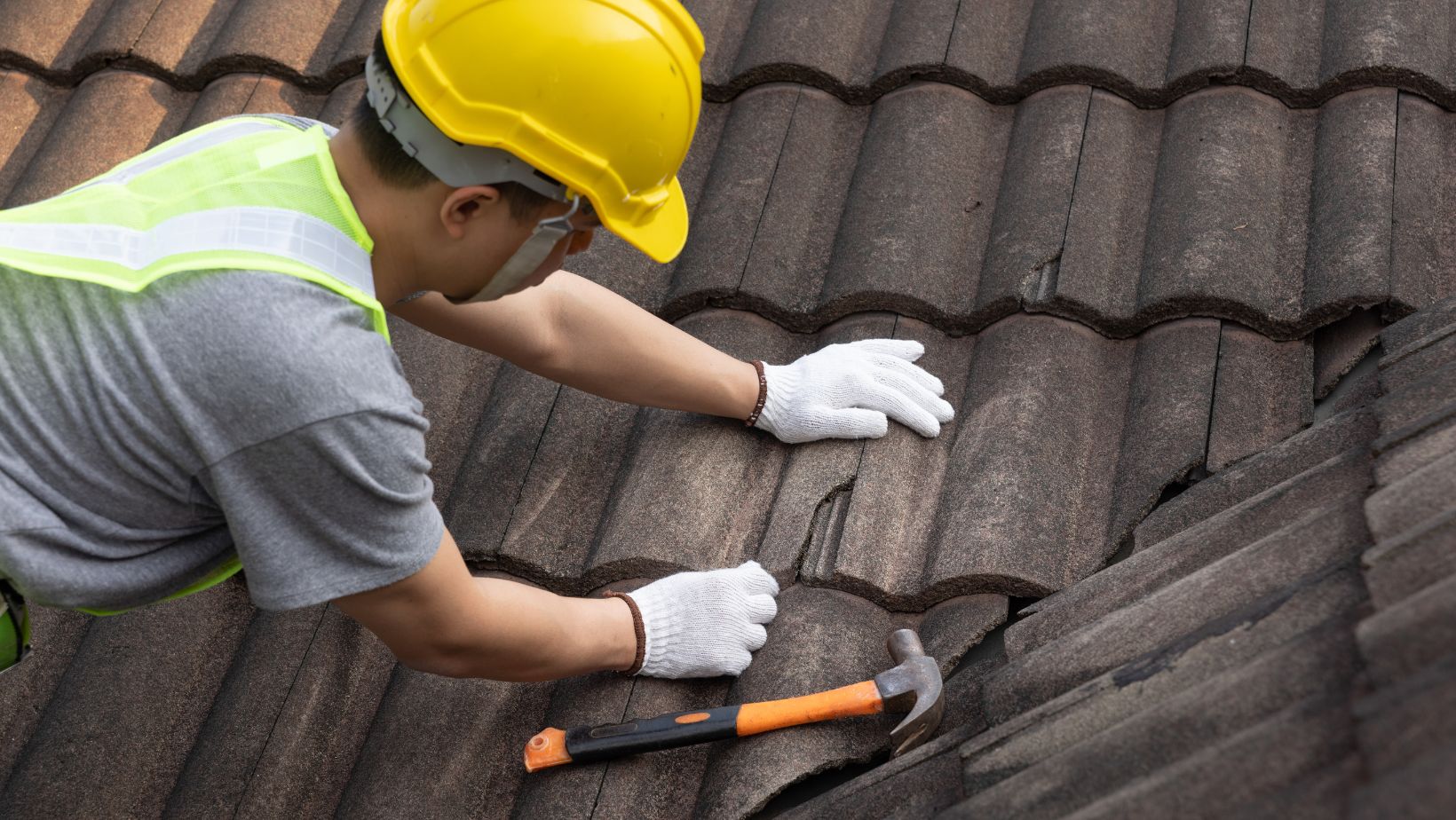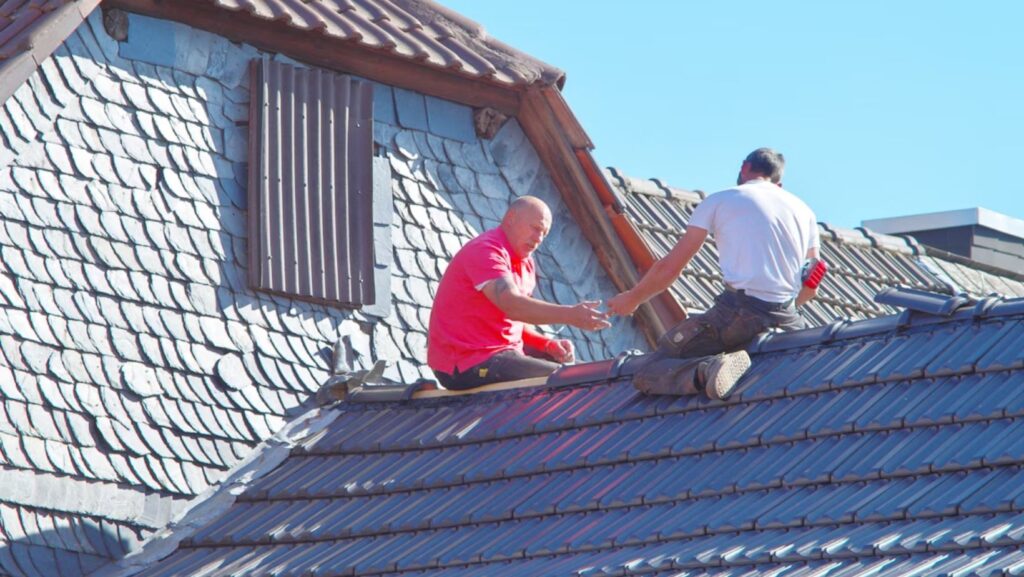Want to squeeze every last year out of your roof investment?
Your roof is the most important part of your home’s protection system. It shields you from rain, snow, wind, and scorching sun day after day. But here’s the thing…
Most homeowners completely neglect their roofs until something goes wrong.
And by then? You’re looking at thousands of dollars in repairs or a complete replacement that could have been avoided with simple maintenance.
The good news? With the right maintenance approach, you can dramatically extend your roof’s lifespan and protect your investment for decades to come.
What you’ll discover:
- Understanding Your Roof’s True Lifespan
- Critical Maintenance Tasks That Matter
- Warning Signs You Can’t Afford to Ignore
- Smart Strategies to Maximize Your Investment
Understanding Your Roof’s True Lifespan
Before we dive into maintenance, let’s talk about what you’re protecting. Different roofing materials have wildly different lifespans, and understanding yours is crucial for planning your maintenance strategy.
Here’s what the data shows:
The average roof lasts 25-50 years depending on the material and maintenance quality. But that’s just the average. With proper care, you can push these numbers significantly higher.
Asphalt shingles, covering roughly 75% of American homes, typically last 20-30 years. Metal roofs can easily hit 50+ years. Slate or clay tiles offer 50-200 years of protection.
But here’s the catch…
None of these lifespans matters without proper maintenance. A $20,000 slate roof can fail in 15 years with poor maintenance, while an $8,000 asphalt shingle roof can last 35 years with good care.
The Foundation of Smart Roof Maintenance
Maintenance isn’t just about fixing problems – it’s about preventing them. The most successful homeowners understand this and build their maintenance strategy around prevention.
The two-inspection rule is your foundation. Professional roofers recommend at least two inspections per year – one in spring and one in fall. This catches problems before they become expensive disasters.
But don’t just hire anyone. When you need professional help, make sure to find a trusted roofer who understands your specific roofing material and local climate challenges. The right contractor can spot issues you’d never notice and provide solutions that extend your roof’s life by years.
Between professional inspections, you should:
- Clear gutters and downspouts monthly
- Remove debris like leaves and branches
- Check for loose or damaged shingles
- Look for signs of water damage in your attic
- Trim overhanging tree branches
Regular maintenance can extend your roof’s life by 5-10 years beyond its expected lifespan. That’s potentially thousands of dollars in savings.
Critical Maintenance Tasks That Work
Not all maintenance tasks are created equal. Some provide massive returns on investment, while others are largely cosmetic. Let’s focus on what actually matters.
Gutter maintenance is your roof’s best friend. Clogged gutters cause water to back up under shingles, leading to leaks and structural damage. Clean them at least twice per year, and consider installing gutter guards if you have lots of trees nearby.
Flashing inspection might be the most important task you’ve never heard of. Flashing is the metal strips around chimneys, vents, and roof joints. When it fails, water gets in fast. Check for rust, cracks, or loose sections every few months.
Moss and algae removal isn’t just about appearance. These growths hold moisture against your roof, accelerating deterioration. Remove them gently with a solution of water and bleach, or hire professionals for stubborn cases.
Ventilation maintenance keeps your roof breathing properly. Poor ventilation leads to ice dams in winter and excessive heat buildup in summer. Both can dramatically shorten your roof’s life.
Sealant application around vents, chimneys, and other penetrations should be checked annually. A $5 tube of sealant can prevent thousands in water damage.
Warning Signs You Can’t Afford to Ignore
Some roof problems announce themselves with obvious leaks. Others are sneaky and can cause thousands in damage before you notice them.
Interior warning signs are often the first indicators:
- Water stains on ceilings or walls
- Musty odors in the attic
- Increased energy bills (poor insulation from roof problems)
- Visible daylight through roof boards
Exterior warning signs require regular inspection:
- Missing, cracked, or curling shingles
- Granules in gutters (sign of shingle deterioration)
- Sagging roof lines
- Damaged flashing around chimneys and vents
The granule test is something every homeowner should know. After storms, check your gutters for excessive granules. A few are normal, but lots of granules mean your shingles are deteriorating rapidly.
Smart Investment Strategies for Maximum Longevity
Understanding the economics of roof maintenance helps you make smarter decisions about when to repair versus replace.
The 50% rule is a good guideline: If repair costs exceed 50% of replacement costs, consider replacement instead. This prevents throwing good money after bad.
Preventive maintenance costs typically range from $120-$400 per year, according to industry data. That’s a small price to pay for protecting a $10,000-$30,000 investment.
The Real Cost of Neglect
Let’s talk numbers. The roofing industry saw 3.7% growth in 2024, partly driven by homeowners finally addressing neglected maintenance issues.
The average roof replacement costs around $9,000, but can range from $5,700 to $12,500 depending on materials and size. That’s a significant investment that proper maintenance can delay by years.
Emergency repairs cost 2-3 times more than planned maintenance. A $200 annual maintenance visit can prevent a $2,000 emergency repair.
Climate-Specific Maintenance Strategies
Your local climate dramatically affects your maintenance needs.
Hot climates accelerate UV damage, requiring regular shingle inspections and adequate ventilation. Cold climates create ice dam risks, making proper insulation and ventilation crucial. Humid climates promote mold and algae growth, requiring improved ventilation and regular cleaning. Coastal areas face salt spray and hurricane risks, needing corrosion-resistant materials and regular washing.
Modern Maintenance Technologies
The roofing industry is embracing new technologies that make maintenance easier and more effective. 20% of contractors now use drones for inspections, allowing safer and more thorough assessments. Thermal imaging can detect moisture problems before they become visible, potentially saving thousands in water damage.
Professional vs. DIY Maintenance
Understanding what you can handle yourself versus what needs professional attention is crucial for both safety and effectiveness.

Professional-only tasks include roof walking inspections, structural repairs, and major material replacement.
Safety considerations should always come first. 31% of homeowners have tackled roofing projects in recent years, but many lack proper safety equipment and training.
Planning Your Maintenance Budget
Smart budgeting for roof maintenance prevents emergencies and spreads costs over time. Annual maintenance budgets should include two professional inspections ($200-$400), gutter cleaning ($100-$200), minor repairs ($200-$500), and preventive treatments ($100-$300).
Wrapping Up This Maintenance Blueprint
Your roof is one of your home’s most important investments, and proper maintenance is the key to protecting that investment. The roofing industry is projected to reach $76.4 billion in 2025, showing just how much Americans invest in roof protection.
Remember, good maintenance isn’t about spending more money – it’s about spending money smartly. A few hundred dollars in annual maintenance can save you thousands in premature replacement costs.
The key takeaways:
- Regular inspections catch problems early
- Climate-specific maintenance strategies work best
- Professional help is worth the investment for complex issues
- Prevention always costs less than emergency repairs
Don’t wait until you see water stains on your ceiling. Start your maintenance routine today, and watch your roof provide reliable protection for decades to come. Your future self (and your wallet) will thank you.


More Stories
When Your Entry Door Starts Speaking (And What It’s Actually Trying to Tell You)
Beyond the Threshold: How Innovative Fenestration Design Reimagines Architectural Boundaries
Garage Door Operators: The Facts According to the Experts